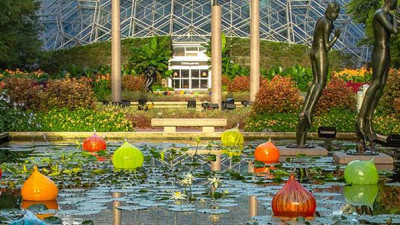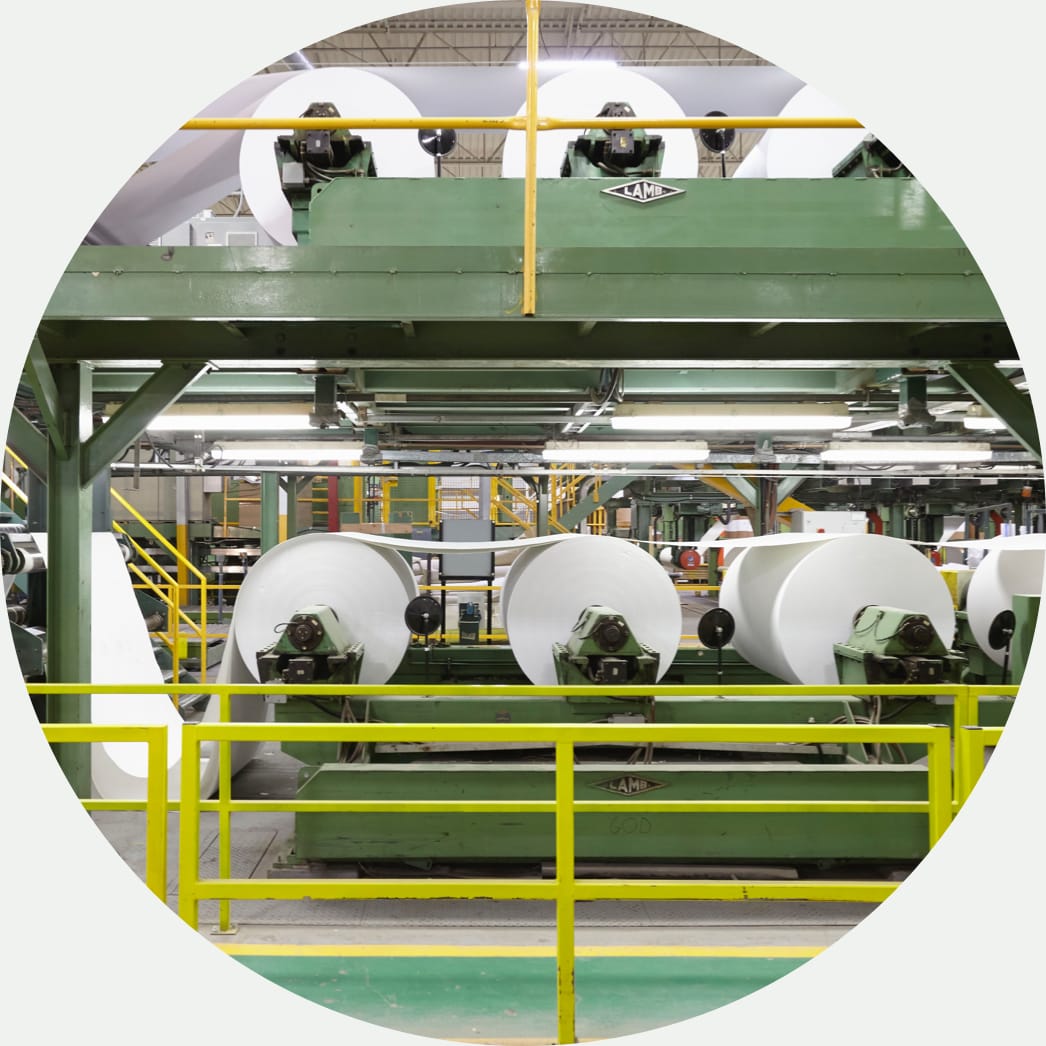Foto Print Eco
A Passion for Paper!
We have been on the environmental bandwagon for over 30 years. We have dug our way out of a traditionally destructive industry, and can now hold our heads high with the knowledge that 'when there's a will, there's a way'. It has been both a challenge and a rewarding end result. Baby steps and individual efforts can make a change.
Recycled/forestry certified paper
We were the first local printing company in the early 80's to pursue recycled paper. The manufacturer, Gladfelter Mills, was buried deep in the United States and the only way to bring paper to Vancouver Island was to fill a railroad car and freight it to Vancouver Island. The paper had squished bugs, glass and unconfirmed substances throughout and the colour choices were non existent. In spite of that, we sold railroad car after railroad car of paper. People were happy to have arrived at a sustainable solution and did not complain about the look and feel of the paper. Here we are 25 years later and recycled and/or certified stock is commonplace.
Today, Rolland Paper is the premier Canadian recycled paper. An undisputed environmental steward in the paper industry, Rolland is the leading producer of commercial papers made from post-consumer recycled fiber. In fact, Rolland it the only North American fine paper manufacturer that uses biogas energy. Our papers contain up to 100% recycled content.
Day-to-day printing
In 2003, we began to take a closer look at our day-to-day processes, and started to take steps to reduce our environmental impact. Before this overhaul, we disposed of 3 commercial dumpsters of garbage per week from our print shop. We currently fill only 2 household-sized garbage cans per week. This has been accomplished with input and great effort by our staff.
We analyzed everything that came in and out of our buildings and began working with our suppliers who were also striving for environmental stewardship. Simple things like switching from white paper towels to brown kraft towels, which can be commercially composted, have a tendency to be overlooked by most establishments. This line of environmental priority has allowed us to compost everything, including lunchroom waste. We are now fertilizing gardens with a simple mindset. 'Does it really have to be garbage?'
We proudly display our EcoStar awards, the result of meeting many challenges head on, proving that a small company like ours can make a positive impact for future generations.
This program has been a great success. Will it continue? Yes! Are there plans to expand? Yes! Our goal is to recycle 100%. Will other print shops follow our lead? We hope so.
Yes, all leading to a better print buying experience.
Before we print ...
We use professional PDF workflow software for processing supplied digital files, which means:- Supplied files are automatically checked for issues which will affect print quality. Most copy centres just print your file as supplied but we will always contact you first if there are resolution, bleeds, or other issues.
- Many minor issues are automatically fixed at no charge.
- Colour profiles are automatically applied which always ensures accurate colour reproduction.
- All print orders and their digital files are archived for ease of reordering.
- Both soft (emailed) and hard copy proofs are provided, which helps to ensure that content and colour is as expected. No negative surprises.
Ordering and proofing ...
- Our customer service people are knowlegeable! This might not sound important but you wouldn't believe how much money and time we can save you with the right advice.
- Fast and simple web based ordering and estimating.
- Online proof approval, if colour accuracy is not critical.
Quality equipment, minimum environmental impact
- We have an extensive equipment profile, including digital, offset and ink-jet, which is necessary for different types, sizes and quantities of printing. Copy centres usually have small digital devices, which are not economical for larger run lengths and render questionable quality.
- We consider the environmental impact of every equipment purchase.
Local ...
- Locally owned, locally produced, locally delivered.
Most recycled papers, especially those with a high percentage of PCW (post consumer waste), do cost slightly more than virgin papers. Volume purchasing keeps the premium to a minimum. We inventory 100% post consumer waste recycled paper, and we use it exclusively for our white bond, uncoated book and envelope stocks. All of our in house papers are either certified by one of the major environmental groups, recycled, or both.
For those who really want to know. Extracted from www.waterless.org.
Why Waterless?
Wet-offset lithography requires the printing press operator to manage a complex mix of wetting fluids and ink. The water used in wet offset is not just plain water—it’s been optimized by adding several chemicals to make it wet the plate more efficiently. These are typically surfactants, detergents, wetting agents, acids, gums, and alcohols, all to make the water wetter and to stabilize interactions with the plate and ink. It’s still mostly water, but with all these chemicals included it is commonly called fountain solution.
Greener
There is an obvious benefit to eliminating fountain solution from the printing process. First, there is the total amount of water that is consumed in the wet-offset process—about one gallon for every 8,000 25" x 40" color press sheets. Depending on where you live, water usage may be a bigger or smaller issue; but no matter where you live, water is a natural resource that is consumed during wet offset printing.
Cleaner
High-speed printing using wet offset generates waste. Fountain solution that is exposed to inks, solvents, and paper debris carries some of the material back to the circulation tank that supplies the fluid to the press. After about a week of production, the fountain solution is contaminated and is generally disposed of as industrial wastewater. So, in addition to not using large quantities of clean water, waterless printing does not generate any industrial wastewater—a double benefit.
More Efficient
Because the printing press does not have be brought to a condition of chemical balance between two fluids, waterless generally starts up and reaches stable color faster than wet offset. This results in lower start-up paper waste for print jobs. Also, the single-fluid waterless process is more stable than wet offset, so color stays more consistent throughout the press run. This reduces running waste, where the press operator may need to discard sheets during the run for color variation.
A Sharper Image
Waterless printing reproduces a better, sharper, and more consistent dot than wet offset. Additionally, waterless prints with lower dot gain than wet offset, allowing higher ink densities to be printed without the color getting muddy. The combination of sharper dots and higher ink density creates higher print contrast. Waterless prints can have more snap or pop than wet offset prints. Finally, due to the higher stability and lower inherent dot gain of waterless, finer screen rulings can be used, allowing higher-resolution, more photo-realistic printing than wet offset.
Substrate Choices
There are many printing applications where the presence of water creates more than the normal amount of challenges. UV printing, for example, uses inks that do not react well with fountain solution in the press. UV is commonly used in printing on nonabsorbent substrates like plastics. When the substrate does not absorb some of the water during the printing process, the correct balance of ink and water becomes very challenging for the press operator to maintain. Waterless printing is an excellent choice for UV printing because it is easier to run and more stable during the printing process. Simpler Wet-offset lithography is a complex process that requires a chemical interaction to be maintained during the physical act of transferring ink from the press to the paper or substrate. Waterless offset is really a physical process, where the physical properties of the ink and plate interact to allow the correct transfer of ink. Waterless is simply easier to print than offset lithography.
Smarter
Better for the environment, more efficient press operation, brighter, sharper, more consistent color, more substrate choices—waterless printing is simply a better choice.
Fotoprint utilizes both digital (high definition, reyclable organic based polymer toner) & offset (vegetable and waterless ink based) printing. Both processes are the latest and best of their respective technologies but there are differences between them.
Hd digital (for smaller quantities)
- Print quality similar to offset, with subtle differences that generally need a magnifying glass or loupe to discern.
- Super fast turnaround times, same or next day.
- Less expensive than offset for smaller quantities.
- Wide range of paper choices up to 15pt thick.
- Prints on up to 16pt. thick plastic. Will not rub off.
- Capable of variable data (mail merge) where each print is unique.
Offset (for larger quantities)
- Very high print quality. (perfect for fussy people :)
- Slightly longer turnaround times, a few days max.
- Less expensive than digital for larger quantities.
- Wide range of paper choices up to 16pt thick.
- Enviro friendly offset print process (see our Environmental Management Plan).
Please note: the term 'digital' printing is used by copy shops to commercial printers. These devices and the companies who utilize them are NOT created equal. Be cautious when buying 'digital' printing. Always ask for samples or a proof to make sure your expectations are met. Print quality and colour accuracy vary considerably.
This unique coating protects our offset and digital printing and will make your print projects look even better. It is a 100% non-toxic polymer resin which is a perfect fit for our concerned approach to the environment. This polymer resin can be applied to any coated paper or card stock, enhancing the appearance with a smooth, glossy finish. In addition, the printed material has an extra layer of protection from abrasion and will not rub off in someone's hand or wallet. There is also no loss of flexibility. If your project will be subject to a lot of handling, such as the cover of a book, please consider our uv coating option to seal the image and make it highly durable. For more information, please see our uv coating page for more details.



